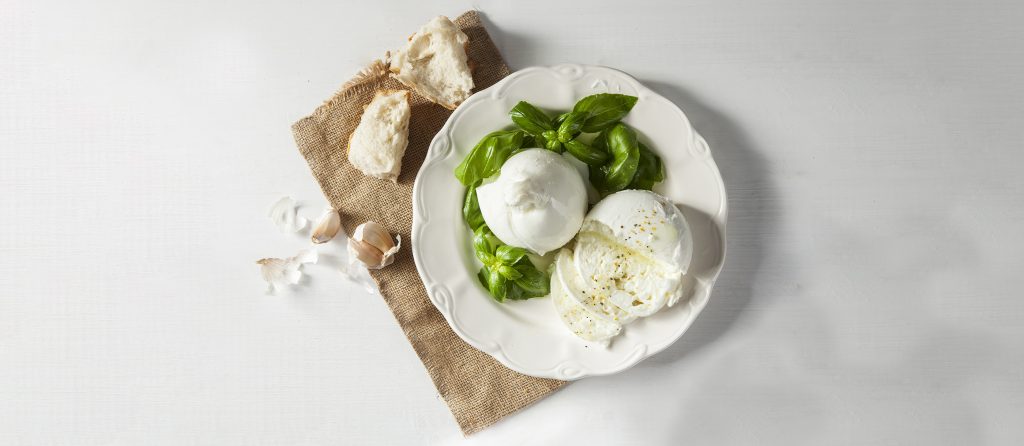
There are many things that makes Apulia famous in Italy and all around the world: the picturesque Trulli, the beautiful coastline, the warm hospitality and least but not last, the food. A tasty, traditional cuisine which still preserves ancient techniques and secrets. Above all, mozzarella, a symbol of Apulia, something that cannot be explained if not tried. The offer is so vast and includes different kinds of mozzarella, each one made through a peculiar and unique process, improved over the centuries.
Burrata is one of the most famous, thanks to its softness, smoothness and intense, but delicate, taste.
It is produced from cow’s milk, rennet, and cream.
A bite of history
Burrata dates back to the middle of the 20th century and it was created in the Southern Italian region of Apulia, in the Murgia area, not far from Castel del Monte, a rather impressive castle built in the 13th Century by Federico II di Svevia, emperor of the Holy Roman Empire.
It is believed that the burrata was first created between in 1920 or 1956 by cheese maker (“mastro casaro”) Lorenzo Bianchino as a way of preserving milk and cream (the cream that naturally formed on the surface of milk) and at the same time recycling mozzarella unused strips. Due to a lack of written documents, other cheese makers in the area also claimed to have invented this amazing product.
At a first glance Burrata looks almost the same as mozzarella, even though it comes with a narrowing at the top. You must poke the pouch to find out what hides under the top layer: the “stracciatella”, a creamy filling made of fresh milk mixed with cream and mozzarella.
Like mozzarella, burrata is made out of cow milk. It has a rich, buttery and fresh flavour provided by the luscious filling.
How to enjoy burrata at its best
With its tasty, milky flavour and its delightful texture, burrata is very versatile and can be eaten alone, with some fresh bread, or even used in a variety of recipes, and it makes an excellent addition to classy dishes. It goes well with fresh and simple salads, with summer vegetables, and it pairs wonderfully with shellfish.
Thanks to Italian immigrants, today you can find burrata everywhere around the world, mainly in high-quality Italian restaurants and fine food stores.
In 2016 “Burrata di Andria” became a Protected geographical indication product(PGI). However, in order to be certified as a “Burrata di Andria”(PGI) , all steps up to the creation of the finished product must take place in the region of Apulia.







